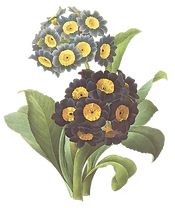Eco-Friendly Christmas
- Cynthia Thomas
- Dec 13, 2016
- 3 min read
I’ve just thrown out another string of Christmas lights again this year. Ugh! I hate seeing all that plastic and wire fill up the trashcan.
Did you know it is estimated that more than 100 million Christmas trees will be purchased this holiday season? And adorning those will be many more million strings of light.
Think of all that energy; all those watts! All those broken lights heaped in a landfill one day.

How did we go from the Bethlehem Star, to candles aglow in the windows or trees, to whole sides of homes dancing with kaleidoscope light shows?
Our modern tradition is credited to Martin Luther, the 16th-century Protestant reformer. Folklore has it that he was walking home one winter evening, composing a sermon, when he was awed by the brilliance of stars twinkling amidst evergreens. To recapture the scene for his family, he erected a tree in the main room and wired its branches with lighted candles.
It wasn’t until 1848, however, that Queen Victoria asked her husband Prince Albert to decorate a tree at Christmastime in his German custom, that the tradition really caught on in England and spread to America. Electricity brought about lights, making it possible for Christmas trees to glow for days on end. And with this, Christmas trees and lights began appearing in town squares across the country.
Nowadays, it’s not a simple strand on a tree, but some homes are transformed inside and out into veritable winter wonderlands. Though I love decorating with lights, I can’t help but wonder how much our efforts are costing both our pocketbooks and our environment, while I run out to the store and try and find a replacement string for that one strand with a black out!
Holidays have become so commercial, I mutter, as I round the corner of Home Depot and get accosted by a 7 foot blow-up winter globe!
Now I'm greeted with a wall of choices. Do I go with "old school" cheap or the new, more durable light-emitting diode (LEDs). A little computer research shows that a string of regular incandescent lights, use 40.8 watts per 100 light strand (0.0408 kW). The 100-light strand of LEDs uses 8 watts (0.008 kW). At the current cost of electricity that is a savings per strand of about $1 for six weeks.
I set up nearly 20 strands of lights, so I can save approximately $20 in electricity by going to LEDs. What interests me more, however, is the kW savings. All 20 strands would be less electricity than 2 of the incandescent ones.
Of course, LEDs cost about 4 times more at point of purchase per strand, but they are more durable, they’re not going to get hot, and they don’t come with warnings about stringing too many together (I used to have a strand of the fat style bulbs that would literally melt the snow right off the bushes.) The shades are a little different, especially the white color - it looks more bluish then yellowish, which I don’t prefer - but the other colors look richer to me. It’s a matter of preference.
From the very first Christmas celebration, bright lights have always heralded glad tidings. I'm all for keeping this tradition, but as we find ourselves replacing old, faulty strands of lights why not consider replacing with this more eco-friendly alternative?
Though it’s not as thrifty as gazing into the beautiful night sky, when you the flip the switch, you may just hear “heaven and nature sing” at your good stewardship.
If you want to order online from a neat Christmas store that has a “Made in USA” selection, go to: https://www.bronners.com























Comments